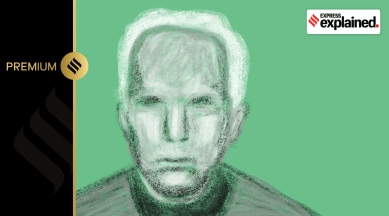As J&K police reopen Ganjoo case, four prominent Kashmiri Pandit murders recalled
The killing of Ganjoo on November 4, 1989 accelerated the chain of events that led to the mass exodus of Kashmiri Pandits from the Valley in early 1990 — leaving behind wounds that are yet to be healed, widening the Hindu-Muslim chasm in J&K, and contributing to communal polarisation across India.

Jammu and Kashmir Police has sought help from the public to unearth “the larger conspiracy” behind the murder of Neelkanth Ganjoo, the retired judge who was shot dead by militants in Srinagar almost 34 years ago.
The killing of Ganjoo on November 4, 1989 accelerated the chain of events that led to the mass exodus of Kashmiri Pandits from the Valley in early 1990 — leaving behind wounds that are yet to be healed, widening the Hindu-Muslim chasm in J&K, and contributing to communal polarisation across India.
On August 21 of that year, National Conference leader Mohammad Yousuf Halwai was killed in broad daylight in Kalashpora in downtown Srinagar.
Having tested the waters, and encountered almost no response from the state apparatus, the killers went for more high-profile targets. The murders of BJP leader Tika Lal Taploo, Ganjoo, Doordarshan official Lassa Kaul, and philanthropist P N Bhat followed.
Tika Lal Taploo
A senior vice president of the BJP, a member of the party’s national executive and its face in Kashmir, was shot dead on September 14, 1989. Taploo, an advocate who was born in Srinagar’s Habba Kadal area, was reportedly on his way to the High Court when he was attacked by three masked assailants.
Taploo’s son Ashutosh Taploo recalled that a fortnight before the killing, his father had received a box of toffees and a letter from Qazi Nissar, then leader of the Muslim United Front, which said that “in view of his (Taploo’s) popularity among Muslims as well, he was being given a final opportunity to leave the Valley”.
Taploo then took his wife Sarla and Ashutosh, then a student of engineering, to Delhi before returning to Srinagar himself. “I advised him not to go back to Kashmir, but he was adamant. He said it was an ideological battle that he had been fighting for long, and that he had survived an attack in 1986 as well. Four days after he returned to Kashmir, he was killed,” Ashutosh said.
Taploo was very popular among both Hindus and Muslims. Thousands joined his funeral procession, in which BJP leaders L K Advani and Kedar Nath Sahni were present.
Neelkanth Ganjoo
Three JKLF militants killed Ganjoo in broad daylight when the retired Sessions Judge had gone to the Jammu and Kashmir Bank branch at Hari Singh High Street. In August 1968, Ganjoo had awarded the death penalty to JKLF founder Maqbool Bhat and another person after a two-year trial for the murder of Police Inspector Amar Chand.
The sentence was confirmed by the Jammu and Kashmir High Court and upheld by the Supreme Court in 1982. Maqbool Bhat was hanged in Delhi’s Tihar Jail in February 1984, days after the JKLF made a failed attempt to have him released through the kidnapping and subsequent murder of Indian diplomat Ravindra Mhatre in the United Kingdom.
Lassa Kaul
Kaul was Director, Srinagar Doordarshan, and a resident of Srinagar’s Bemina area. He was shot dead by JKLF militants in the evening of February 13, 1990, as he came out of the Doordarshan Kendra to make a phone call to his ailing parents who lived on the outskirts of Srinagar city.
Kaul had received several threats from militants for Doordarshan’s “pro-India” programmes. It was suspected that the killers had information about his movements, and were waiting for him to come out of the Doordarshan building.
P N Bhat
An advocate by profession and a philanthropist and writer, Bhat was killed on December 27, 1990 after the bulk of the Kashmiri Pandit exodus had already taken place. After arguing a case in court, he left for home around 3.45 pm, his son Kishori Lal Bhat, an advocate at the High Court of Jammu and Kashmir and Ladakh recalled.
It was amavasya, a day when Kashmiri Pandits prepare mutton with rice. Bhat was headed to the market to make some purchases, and met some other Kashmiri Pandits on the way. Near his ancestral home at Khaw Bazar, Bhat was greeted by a person wearing a pheran, who proceeded to then pull out a gun and shoot him under the chin.
Three people were arrested for the murder and tried in a TADA court. However, they were acquitted for want of evidence, Kishori Lal Bhat said, adding that all three were later killed in encounters between security forces and militants in Kashmir.